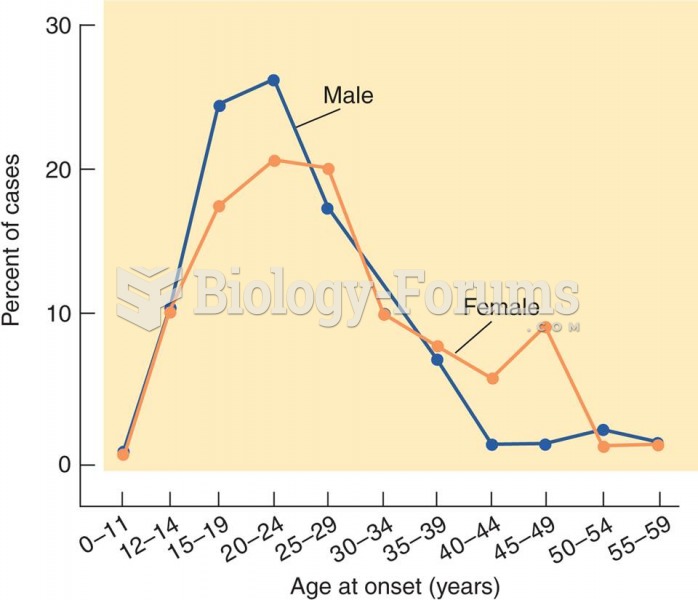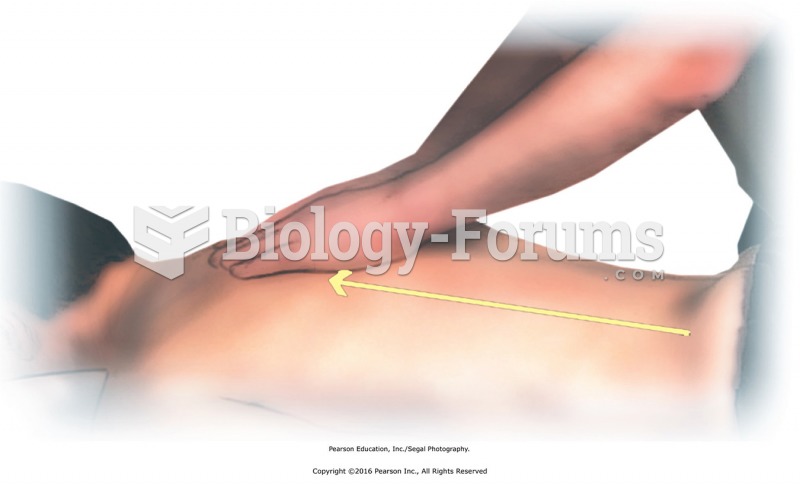Answer to Question 1
1, 3, 4, 5
Rationale 1: Initial adverse effects are GI-related, and include loss of appetite, vomiting, and diarrhea. Headache, drowsiness, confusion, and blurred vision can occur. Excessive slowing of the heart rate and other cardiac abnormalities can be fatal if not corrected.
Rationale 2:Tachycardia is incorrect because digoxin toxicity can cause bradycardia.
Rationale 3: Initial adverse effects are GI-related, and include loss of appetite, vomiting, and diarrhea. Headache, drowsiness, confusion, and blurred vision can occur. Excessive slowing of the heart rate and other cardiac abnormalities can be fatal if not corrected.
Rationale 4: Initial adverse effects are GI-related, and include loss of appetite, vomiting, and diarrhea. Headache, drowsiness, confusion, and blurred vision can occur. Excessive slowing of the heart rate and other cardiac abnormalities can be fatal if not corrected.
Rationale 5: Initial adverse effects are GI-related, and include loss of appetite, vomiting, and diarrhea. Headache, drowsiness, confusion, and blurred vision can occur. Excessive slowing of the heart rate and other cardiac abnormalities can be fatal if not corrected.
Global Rationale: Initial adverse effects are GI-related, and include loss of appetite, vomiting, and diarrhea. Headache, drowsiness, confusion, and blurred vision can occur. Excessive slowing of the heart rate and other cardiac abnormalities can be fatal if not corrected. Tachycardia is incorrect because digoxin toxicity can cause bradycardia.
Answer to Question 2
1
Rationale 1: Digoxin immune fab (Ovine) is given as an antidote to digoxin toxicity. Serum levels above 1.8 ng/mL are considered toxic.
Rationale 2:The same dose of digoxin (Lanoxin) is incorrect because digoxin immune fab (Ovine) is given as an antidote to digoxin toxicity. Serum levels above 1.8 ng/mL are considered toxic.
Rationale 3:Furosemide (Lasix) is incorrect because digoxin immune fab (Ovine) is given as an antidote to digoxin toxicity. Serum levels above 1.8 ng/mL are considered toxic.
Rationale 4:An increased dose of digoxin (Lanoxin) is incorrect because digoxin immune fab (Ovine) is given as an antidote to digoxin toxicity. Serum levels above 1.8 ng/mL are considered toxic.
Global Rationale: Digoxin immune fab (Ovine) is given as an antidote to digoxin toxicity. Serum levels above 1.8 ng/mL are considered toxic.
 Effleurage to transition to lower leg-distal to proximal. Apply effleurage with moderate pressure to ...
Effleurage to transition to lower leg-distal to proximal. Apply effleurage with moderate pressure to ...
 Apply direct thumb pressure into points along the upper trapezius from base of neck to shoulder. ...
Apply direct thumb pressure into points along the upper trapezius from base of neck to shoulder. ...




